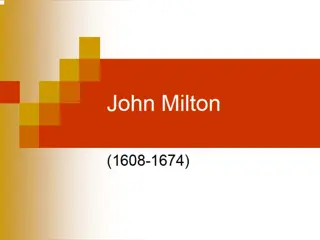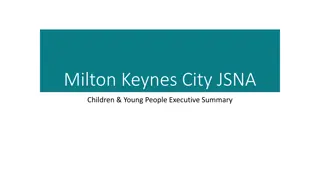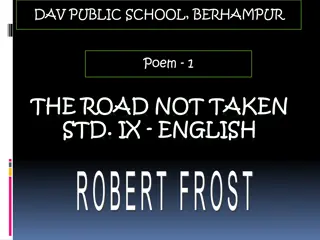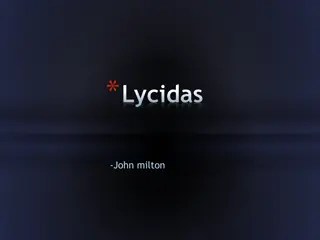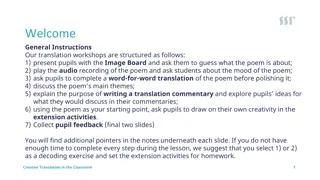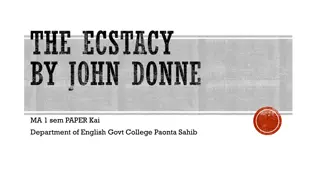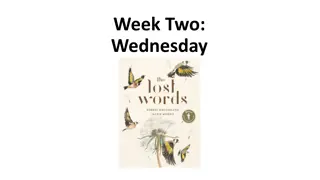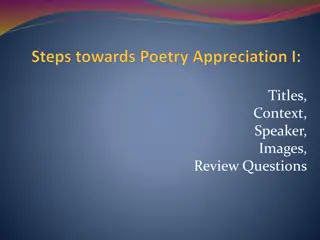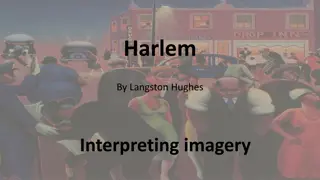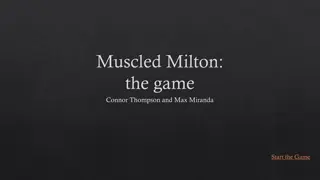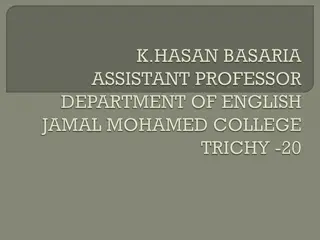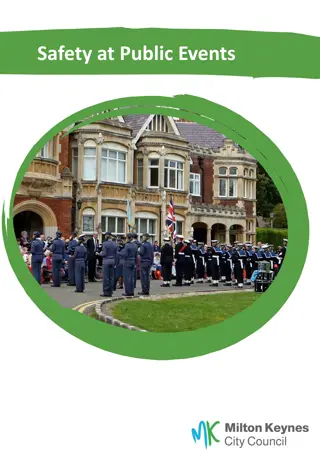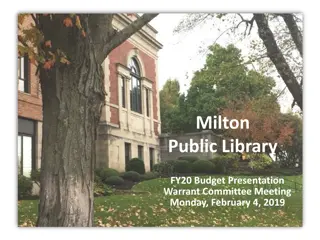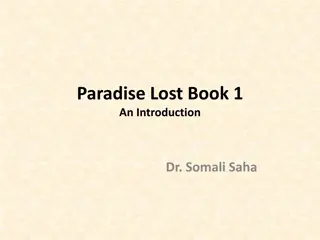Analysis of John Milton's Poem "How Soon Hath Time
In "How Soon Hath Time," John Milton reflects on the passage of time and its impact on his own life. He laments how quickly time steals away youth and reveals his introspective thoughts on reaching manhood. The poem explores themes of aging, self-reflection, and the inevitability of time's passage in a structured Petrarchan sonnet form. Milton contemplates the significance of reaching adulthood and acknowledges his own personal growth. Through rich language and poetic devices, he delves into the complexities of time and human existence.
Download Presentation

Please find below an Image/Link to download the presentation.
The content on the website is provided AS IS for your information and personal use only. It may not be sold, licensed, or shared on other websites without obtaining consent from the author.If you encounter any issues during the download, it is possible that the publisher has removed the file from their server.
You are allowed to download the files provided on this website for personal or commercial use, subject to the condition that they are used lawfully. All files are the property of their respective owners.
The content on the website is provided AS IS for your information and personal use only. It may not be sold, licensed, or shared on other websites without obtaining consent from the author.
E N D
Presentation Transcript
JOHN MILTON 1. 2. 3. 4. 5. 6. 7. 8. "How Soon Hath Time" Summary Form and Structure Meter Rhyme Scheme Themes Detailed Analysis Historical Context AtheerMuhsin
"How Soon Hath Time" How soon hath Time, the subtle thief of youth, Yet be it less or more, or soon or slow, Stol'non his wing my three and twentieth year! It shall be still in strictest measure even My hasting days fly on with full career, To that same lot, however mean or high, But my late spring no bud or blossom shew'th. Toward which Time leads me, and the will of Heaven; Perhaps my semblance might deceive the truth, All is, if I have grace to use it so, That I to manhood am arrived so near, As ever in my great Taskmaster's eye And inward ripeness doth much less appear, That some more timely-happy spirits endu'th.
SUMMARY How soon hath Time, the subtle thief of youth, Stol'n on his wing my three and twentieth year! My hasting days fly on with full career, But my late spring no bud or blossom shew'th. Perhaps my semblance might deceive the truth, That I to manhood am arrived so near, And inward ripeness doth much less appear, That some more timely-happy spirits endu'th
SUMMARY Yet be it less or more, or soon or slow, It shall be still in strictest measure ev'n To that same lot, however mean or high, Toward which Time leads me, and the will of Heav'n: All is, if I have grace to use it so As ever in my great Task-Master's eye.
FORM AND STRUCTURE Petrarchansonnet Theoctave Thesestet Line 9, is called the"turn" or the "volta."
METER 1 Howsoonhath Time,thesubtlethiefof youth, 2 Stol'non hiswing 12 TowardwhichTime leadsme,and thewillof Heav'n:
RHYME SCHEME 1 How soon hath Time, the subtle thief of youth, 2 Stol'n on his wing my three-and-twentiethyear! 3 My hasting days fly on with full career, 4 But my late spring no bud or blossom shew'th. 5 Perhaps my semblance might deceive the truth 6 That I to manhood am arriv'd sonear; 7 And inward ripeness doth much less appear, 8 That some more timely-happy spirits endu'th.
9 Yet be it less or more, or soon or slow, 10 It shall be still in strictest measure ev'n 11 To that same lot, however mean or high, 12 Toward which Time leads me, and the will of Heav'n: 13 All is, if I have grace to use it so 14 As ever in my great Task-Master's eye.
THEMES Work, Ambition, and Aging Faith, Grace, and Self-Surrender
DETAILED ANALYSIS


